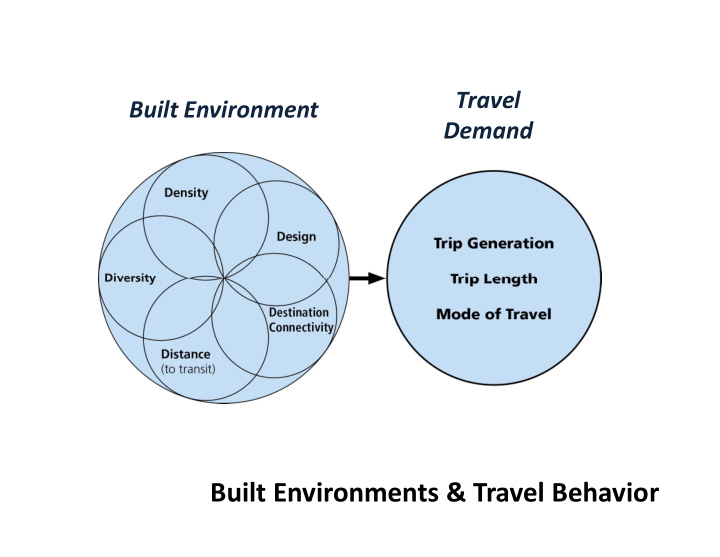



Travel Built Environment Demand Built Environments & Travel Behavior
Transportation street networks have a huge influence on urban form and travel. Downtown Bellevue Downtown Seattle Downtown Portland (21% used for right-of-way) ( 38 % used for right-of-way) ( 42 % used for right-of-way) 600-foot blocks 300 -foot blocks 250 -foot blocks 2
“Street as Plaza” – Bellevue Way to �������������������������� 106th 4
Neighborhood Retail
Seattle Pedestrian Master Plan Vision: Make Seattle the Most Walkable City in the Nation Identify actions, projects, and programs to achieve the following goals: • Safety: Reduce the number and severity of crashes involving pedestrians • Equity: Make Seattle a more walkable city for all through equity in public engagement, service delivery, and capital investments • Vibrancy: Develop a pedestrian environment that sustains healthy communities and supports a vibrant economy • Health: Raise awareness of the important role of walking in promoting health and preventing disease
Pedestrian Master Plan: Objectives • Complete and maintain the pedestrian system • Improve walkability • Increase safety • Plan, design, and build complete streets • Create vibrant public spaces • Get more people walking �
Improvement Opportunities Along the Roadway Across the Roadway
Pedestrian Potential Demand Generators High generator • – University or college – Major destination – Light rail – Major bus stop Medium generator • – School – Major retail / grocery – Hospital – Community center – Park Low generator • – Minor retail – Minor bus stop
2011 PMP Infrastructure Deliverables • 50 crossing improvements • 25 pedestrian countdown signals • 300 crosswalks remarked • 10 school zone improvements • 5 school walking route improvements • 10 blocks of new sidewalk • 22 blocks of sidewalk repair • 280 curb ramps 10
���������������������������������� Good for the Good for the environment. environment. Encourages active & Encourages active & Improves the quality of Improves the quality of healthy living. healthy living. life. life. Other modes depend Other modes depend Makes roads safer for all Makes roads safer for all Many cannot Many cannot Good for Good for on walking & biking. on walking & biking. road users road users drive. drive. business. business. 11
Summary: Walkable Communities Important to Consider Several Aspects: • Land Use: A major part of “proximity”. Land use proximity influences ability to walk • Facilities along corridors: Sidewalks, adequate sidewalk widths, buffers from cars, opportunities for place-making • Safe crossings: Pay attention to conflict points at intersections • “Orange Juice” test Kevin O’Neill, AICP (kevin.oneill2@seattle.gov )
Recommend
More recommend